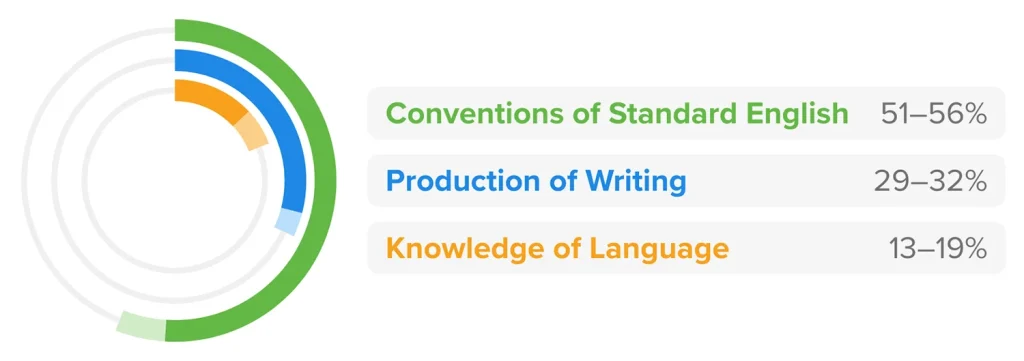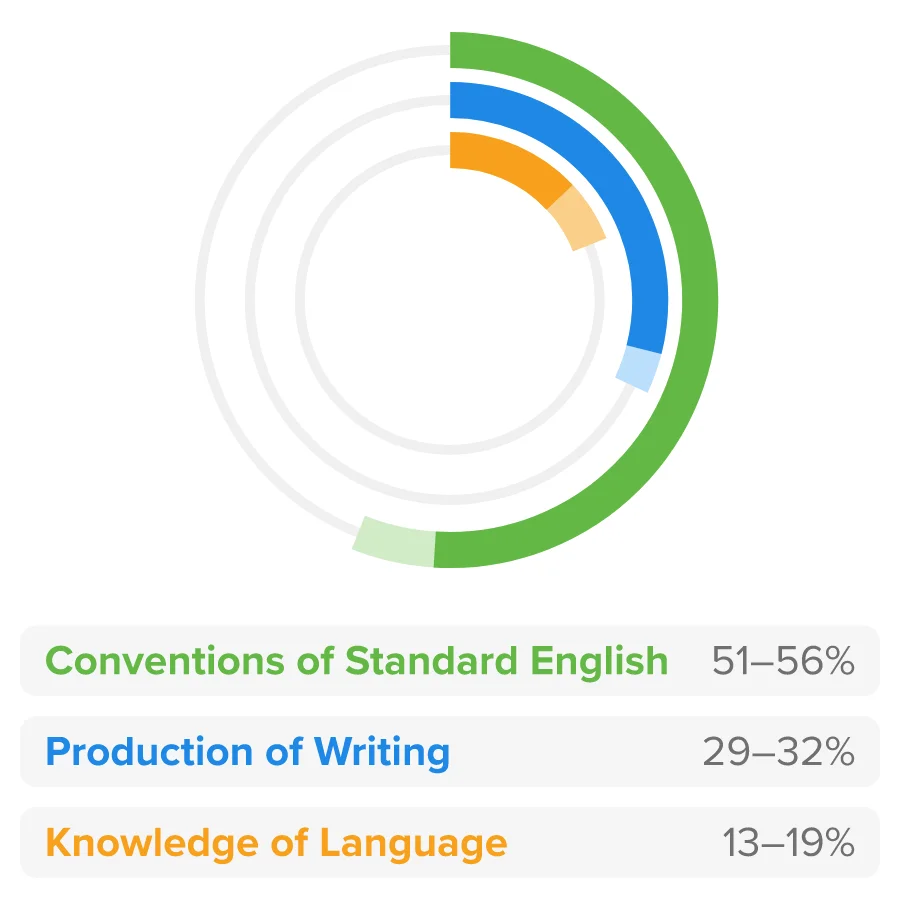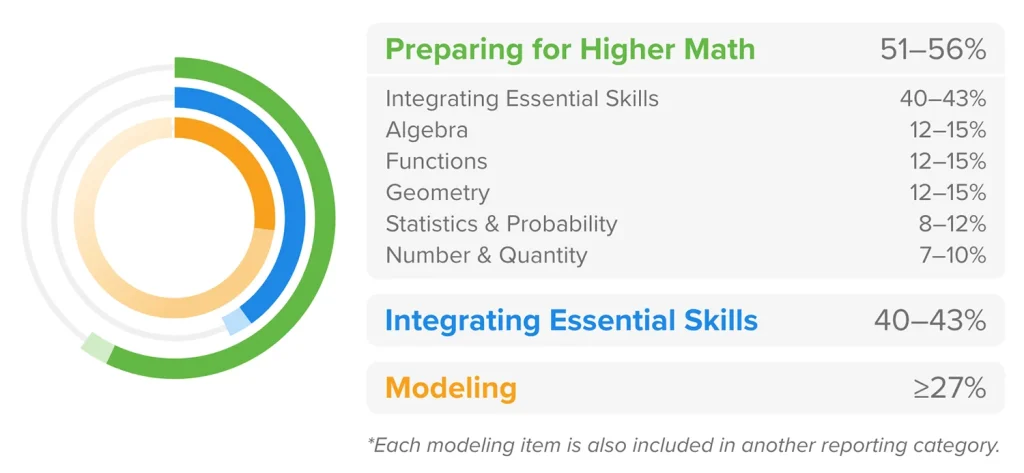
If you are planning to take the ACT®, you are probably curious how the ACT is scored. This one-stop ACT scoring guide has everything you need to know how scores from different sections contribute to your overall score, ACT score range, conversion of raw scores to scaled scores, and score release dates.
The ACT test consists of four mandatory sections: English, Math, Reading, and Science. Your final ACT score, ranging from 1-36, is the average of your scores from these sections on the test. If you are taking the ACT with an optional writing test, the scores of your writing section will provide details about your writing abilities; however, they will not affect your overall ACT score. To generate your total ACT score, the raw score from each section is converted to a scaled score.
Study on your schedule, at your pace, and at an affordable price.

 of the angle with a circle and equation graphed in a standard plane" width="700" height="525" />
of the angle with a circle and equation graphed in a standard plane" width="700" height="525" />
Your ACT raw score is determined by the number of questions you answer correctly on the test. There is no penalty for wrong answers or the questions you leave blank. For example, on your Math test, if you answer 45 questions correctly, leave 5 blank, and answer 10 wrong, your raw score for that section would be 45.
The raw score for each section depends on the number of questions in each section. Below is a breakdown of each section, its corresponding raw score range, and number of questions.
After your raw scores are calculated, they are converted to a standardized scale of 1-36 for each section. These converted scores are known as scaled scores. You must note that the conversion scale, set by the ACT, is almost the same for every test; however, there may be slight differences depending on the difficulty level of the test. For example, a raw score of 38 on the Science test may earn you a scaled score of 36 on some versions of the test, while for other versions, you may be required to get a raw score of 39 or 40 to earn a scaled score of 36.
Now that you know what raw and scaled scores are, let’s learn in detail about the ACT scoring range for each section.
To find the score for the English Section, first, your raw score is calculated. As there are 75 questions in this section, the highest raw score you can receive is 75. Once your raw score is calculated, it is converted to the scaled score, ranging from 1-36.
The following are the three reporting categories for ACT English scoring:


In the ACT English section, the questions are either detail, broad-idea, or big-picture-based, and they generally test your rhetorical, usage, and mechanics skills. To learn how you can improve your ACT English score, check out our ACT English Study Guide.
To get the Math section score, your raw score is calculated. The maximum raw score you can get for this section is 60, as the total number of questions in this section is also 60. After your raw score is calculated, it is then converted to a scaled score of 1-36.
The reporting categories for this section are:


This section assesses mathematical skills that students have acquired up until grade 12. The ability to calculate and understand basic concepts can be a huge advantage on this test. Read our ACT Math Study Guide to learn the strategies to improve the score on the Math test and make an effective study plan.
For the reading section, first, your raw score is calculated in order to determine your section score. Given that there are 40 questions in this section, the maximum raw score you can get is 40. Once your raw score is obtained, it is converted to a scaled score of 1-36.
The following are the reporting categories for this section:


The Reading Test has various questions to check your understanding of the flow of ideas and spot details in the given passages. You will be assessed on your ability to read intently and evaluate text critically. Plan ahead of time and prepare well for your Reading section with our ACT Reading study guide.
In order to calculate your score for the science section, your raw score must first be calculated. With a total of 40 questions in this section, the maximum raw score you can receive is 40. After your raw score is determined, it is converted to a scaled score of 1-36.
Below are the three reporting categories for this section:


This section evaluates the skills required to grasp, examine, weigh, reason, and address issues in the natural sciences. You'll be required to interpret graphs, figures, tables, and charts. For the most efficient way to prepare for your science section, follow our ACT Science study guide.
For the ACT Writing section, your essay is scored by two graders and assessed on four domains. Each domain is scored on a scale of 1-6 by each grader. The scores from the two graders are then added together to get four separate domain scores for this section ranging from 2 to 12. Additionally, the four domain scores are averaged to report a single subject-level score for this section also ranging from 2-12.
The four scoring domains for the ACT Writing section are:
You must note that your Writing section score will assess your writing and expression ability only and will not contribute to the ACT composite score.
You can learn about raw-to-scaled score conversion with the following ACT score calculator chart. The conversion table in this ACT scoring guide was created using the 2022-23 ‘Preparing for the ACT’ document published by the ACT.
| RAW SCORES | SCALED SCORE | |||
|---|---|---|---|---|
| English test | Math test | Reading test | Science test | |
| 72-75 | 58-60 | 39-40 | 38-40 | 36 |
| 70-71 | 56-57 | 38 | 37 | 35 |
| 68-69 | 54-55 | 37 | 36 | 34 |
| 67 | 53 | 35-36 | 35 | 33 |
| 66 | 51-52 | 34 | 34 | 32 |
| 65 | 49-50 | 33 | - | 31 |
| 64 | 48 | - | 33 | 30 |
| 62-63 | 46-47 | 32 | 32 | 29 |
| 61 | 44-45 | 31 | 31 | 28 |
| 60 | 41-43 | 30 | - | 27 |
| 58-59 | 39-40 | 29 | 30 | 26 |
| 56-57 | 37-38 | 28 | 28-29 | 25 |
| 53-55 | 35-36 | 27 | 26-27 | 24 |
| 51-52 | 33-34 | 26 | 25 | 23 |
| 48-50 | 31-32 | 24-25 | 23-24 | 22 |
| 45-47 | 30 | 23 | 22 | 21 |
| 42-44 | 28-29 | 21-22 | 20-21 | 20 |
| 40-41 | 26-27 | 20 | 19 | 19 |
| 38-39 | 24-25 | 19 | 17-18 | 18 |
| 36-37 | 21-23 | 17-18 | 15-16 | 17 |
| 33-35 | 17-20 | 16 | 13-14 | 16 |
| 30-32 | 13-16 | 14-15 | 12 | 15 |
| 27-29 | 10-12 | 12-13 | 11 | 14 |
| 25-26 | 8-9 | 11 | 10 | 13 |
| 23-24 | 6-7 | 9-10 | 9 | 12 |
| 19-22 | 5 | 7-8 | 8 | 11 |
| 16-18 | 4 | 6 | 7 | 10 |
| 13-15 | - | 5 | 6 | 9 |
| 11-12 | 3 | - | 5 | 8 |
| 9-10 | - | 4 | 4 | 7 |
| 7-8 | 2 | 3 | 3 | 6 |
| 6 | - | - | - | 5 |
| 4-5 | 1 | 2 | 2 | 4 |
| 3 | - | - | 1 | 3 |
| 2 | - | 1 | - | 2 |
| 0-1 | 0 | 0 | 0 | 1 |
After getting your scaled scores, the next step is calculating your final ACT score. The ACT score is the average of scaled scores from the English, Math, Reading, and Science sections. You need to add up the scaled scores from these sections and divide the sum by four. Then, round off the answer to the nearest whole number. That is your total ACT score. The highest ACT score you can get is a perfect 36, while the lowest ACT score is 1.
To learn about the components of your score report, read our blog on How to interpret ACT score report.
The ACT scores are generally available two to four weeks after the testing date. Following the ACT score release dates is a great way to track when your scores will be ready to view. Refer to the following table to know the time frame in which the scores are processed.
| National Test Date | Reporting Timeframe |
|---|---|
| February 11, 2023 | February 28 – April 7 |
| April 15, 2023 | April 25 – June 9 |
| June 10, 2023 | June 20 – August 4 |
| July 15, 2023 | July 25 – September 8 |
If your results are not available during the stated time frame, it may be due one the following issues:
If you are interested to know how to check your ACT score and at what time scores are released, be sure to read our blog on What To Expect on ACT Score Release Day.
Remember that it is very important to start your ACT test preparation well ahead of time and practice all the important topics and concepts. For tracking your performance you can even go for the PreACT test which is the official practice version of the ACT. The PreACT scores will help you understand which areas you need to improve. Be sure to follow our ACT study guide to know the tips for preparing effectively and getting a perfect score.